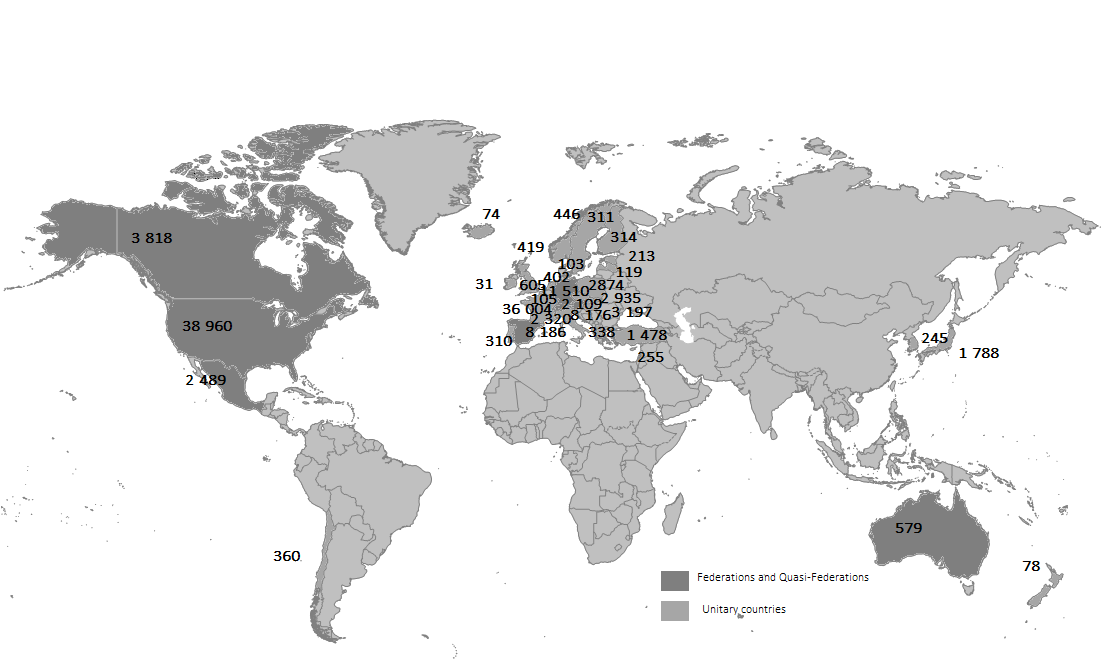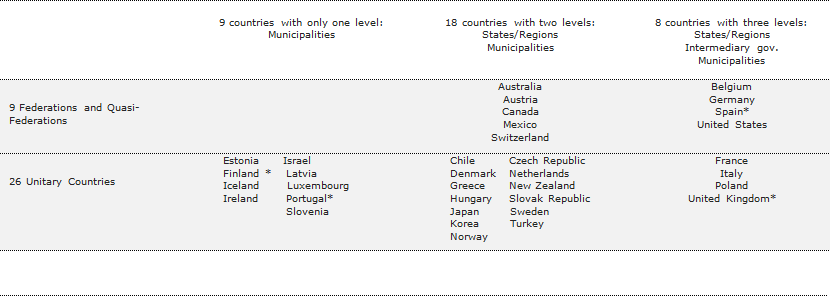Regional development
Multi-level Governance and Decentralisation
Our Activities | Recent Publications | Background
|
Since the creation of the Regional Development Policy Committee (RDPC) in 1999, the OECD has developed a stream of work on multi-level governance and decentralisation. This work focuses on helping countries respond to diverse challenegs that can affect how policy is implemented by subnational levels of government, such as the assignment of responsibilities, subnational finance and investment, coordination of institutions and improving capacity.
Read the brochure on Multi-level governance, decentralisation, local finance and investment (PDF) |
|
Recent Publications
- OECD (2017), Multi-level Governance Reforms: Overview of OECD Country Experiences
- OECD (2017), Territorial Reviews: Sweden. Monitoring Progress in Multi-level Governance and Decentralisation
- OECD (2017), Subnational Governments in OECD Countries: Key Data (brochure)
- OECD/UCLG (2016), Subnational Governments around the World: Structure and Finance
- OECD (2016), Making the Most of Public Investment in Colombia: Working Effectvely across Levels of Government
- OECD (2016), Making the Most of Public Investment in the Eastern Slovak Republic
- OECD (2016), Regions at a Glance
- OECD (2014), Effective Public Investment across Levels of Government. Principles for Action
- OECD (2013), Investing Together. Working Effectively across Levels of Govenment
- OECD (2012), Recommendation of the Council on Effective Public Investment across Levels of Government
Background
Territorial governance structures vary considerably among OECD countries: there are 9 federal and 26 unitary states with around 138,000 subnational governments. This refelects diversity of approches to multi-level governance relations and subnational-policy mechanisms.
Number of subnational governments in OECD countries

Source: OECD (2016), Subnational Governments in OECD Countries: Key Data, 2016 edition
Territorial governance structures in OECD countries

|
Notes: 1. Spain is a quasi-federal country. 2. Finland and Portugal have autonomous regions on part of the country. 3. There is an intermediary level only on part of England. Source: OECD (2017), Multi-level Governance Reforms: Overview of OECD Country Experiences, OECD Publishing, Paris |
The role of subnational governments has increased in recent decades in the OECD and a majority of countries have conducted multi-level governance reforms to clarify and improve the relationship with subnational authorities.
Multi-level governance reforms in OECD countries: an overview
| Source: OECD (2017), Multi-level Governance Reforms: Overview of OECD Country Experiences, OECD Publishing, Paris |
In OECD countries, there are common threads in the way responsibilities are assigned across different levels of government. The table below provides an overview based on these commonalities. In practice, though, the assignment of responsibilities is complex and often leads to competing and overlapping competencies as well as a lack of clarity on “who does what” across levels of government. This can make accounatbility more difficult to manage.
Breakdown of responsibilities across different levels of government (general scheme)

| Source: OECD (2016), Regions at a Glance 2016, OECD Publishing, Paris |
Related Documents

